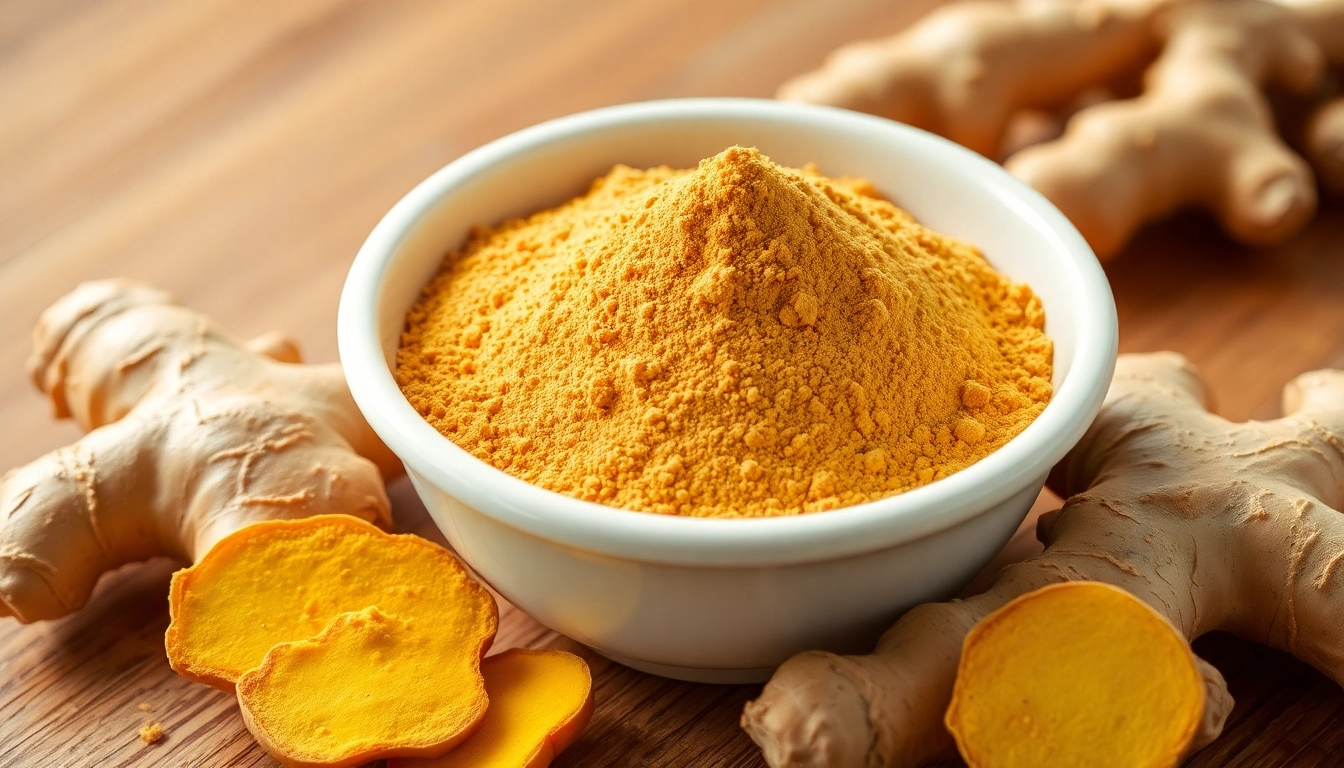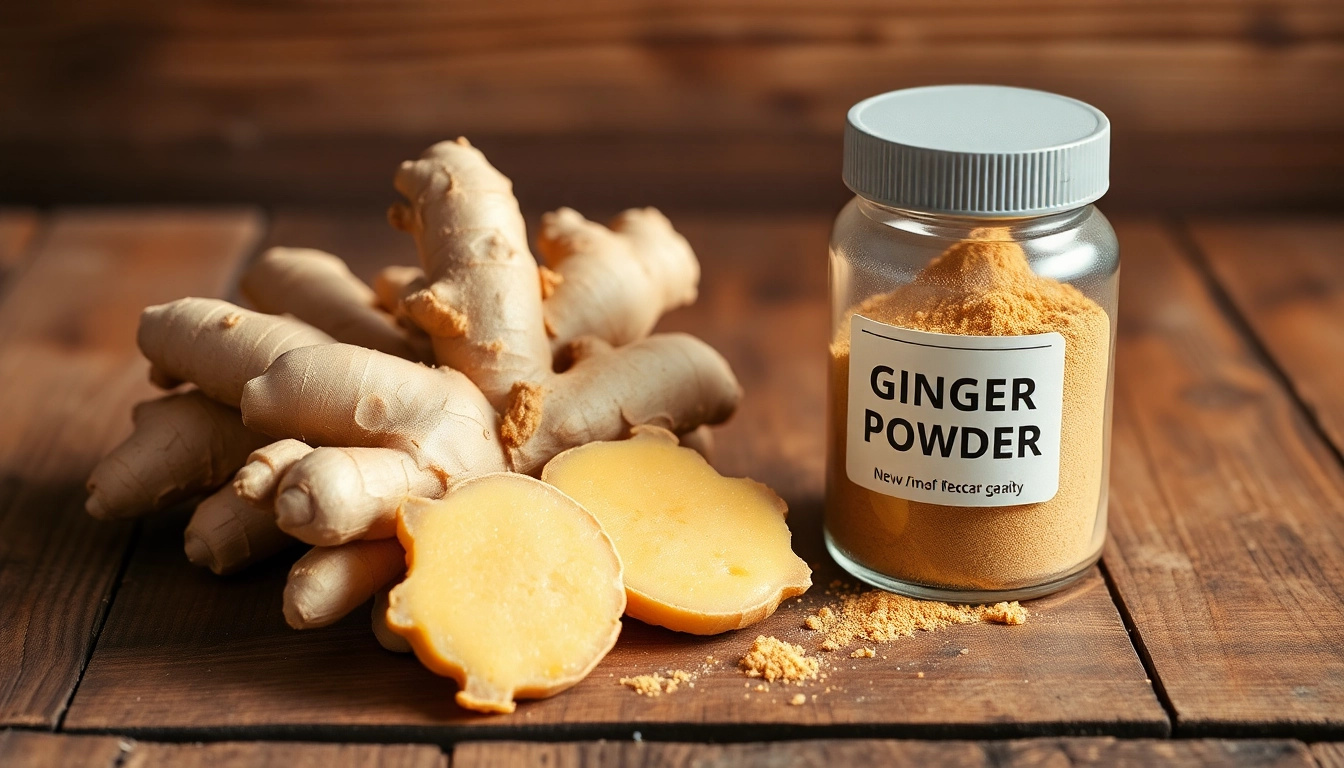The Power of Ginger Powder in the Food Industry: A Complete Guide to Market Potential, Quality, and Strategic Growth
Ginger powder has established itself as an indispensable ingredient in the global culinary and health markets. From its rich history dating back centuries to its current status as a high-demand superfood, ginger powder continues to captivate consumers and food manufacturers alike. As a Ginger Powder manufacturer and exporter, Spice Nest exemplifies quality, authenticity, and innovation, contributing significantly to this thriving sector. This comprehensive guide delves into the multifaceted benefits of ginger powder, how to optimize its market presence, effective marketing channels, and strategies for building long-term brand trust and expanding export horizons.
Understanding the Benefits of Ginger Powder in the Food Industry
Health Advantages and Nutritional Value of Ginger Powder
Ginger powder is renowned for its potent medicinal properties rooted in its rich bioactive compounds such as gingerol, paradol, and shogaol. These compounds confer anti-inflammatory, antioxidant, and antimicrobial benefits. Regular consumption of ginger powder aids in digestion, reduces nausea, and bolsters immune health. Its analgesic properties make it a popular choice for managing chronic pain and soreness. Nutritionally, ginger powder provides essential nutrients such as vitamins B6 and C, manganese, magnesium, and potassium, making it a valuable addition to health-conscious consumer diets. Recent scientific studies highlight its role in reducing blood sugar levels and supporting heart health, aligning with the growing consumer trend toward functional foods.
Common Culinary Uses and Flavor Profiles
Ginger powder’s warm, spicy, and slightly sweet flavor elevates a variety of cuisines worldwide. It is integral to baking (gingerbread, cookies), beverages (ginger tea, smoothies), and savory dishes (curries, stir-fries). Its versatility extends to spice blends, marinades, and condiments, imparting a distinctive aroma and zest. Chefs and home cooks value ginger powder for its ability to enhance flavor profiles without overpowering other ingredients. The powder’s fine texture ensures even distribution, making it ideal for dry rubs and seasoning mixes. Its flavor profile harmonizes with garlic, chili, turmeric, and coriander, facilitating innovative culinary creations.
Market Demand and Consumer Trends for Ginger Products
Current market dynamics reflect a rising consumer interest in natural, organic, and health-promoting ingredients, fueling demand for ginger powder. The organic food industry particularly emphasizes ginger’s purity and bioavailability. Globally, markets like North America, Europe, and Asia Pacific witness increased consumption due to rising awareness of ginger’s health benefits. Additionally, the functional foods and supplements segments integrate ginger into capsules, teas, and health shots. Consumer preferences now favor sustainably sourced, ethically produced ginger powders, pushing producers to adhere to quality standards and certifications. Spice Nest’s presence at major food exhibitions worldwide signifies its commitment to staying at the forefront of these evolving trends.
Optimizing Your Website Content for Ginger Powder SEO
Keyword Integration and Content Structuring
Effective SEO starts with strategic keyword placement. For ginger powder, primary keywords such as “Ginger Powder,” “Organic Ginger Powder,” “Premium Ginger Powder,” and “Bulk Ginger Powder” should be incorporated seamlessly within titles, headers, and body content. LSI (Latent Semantic Indexing) keywords like “spices for health,” “natural ginger extract,” and “culinary ginger” enrich the content contextually. Structuring the content with clear headings, bullet points, and concise paragraphs improves readability and search engine crawlability. Ensuring the target keyword appears within the first 100 words enhances relevance and ranking potential.
Crafting Compelling Product Descriptions and Meta Tags
Product descriptions must highlight unique selling propositions such as purity, origin, processing methods, certifications (ISO, FSSAI), and flavor profile. Use persuasive language emphasizing health benefits and culinary versatility. Example: “Our premium organic ginger powder is carefully processed to preserve its natural aroma and medicinal qualities, making it an ideal choice for health-conscious consumers and professional kitchens.” Meta titles and descriptions should mimic such product narratives, incorporating the main keyword naturally to boost click-through rates from search results.
Implementing User-Focused Information and Calls to Action
Website content should cater to different customer personas—bulk buyers, retailers, health enthusiasts, and culinary experts. Providing comprehensive FAQs, usage tips, recipes, and nutritional info enhances user engagement. Calls to action such as “Request a quote,” “Download our product catalog,” or “Contact us for wholesale inquiries” should be prominent, guiding visitors toward conversion. Embedding testimonials and certifications further solidifies trust and credibility.
Effective Digital Marketing Channels for Ginger Powder Products
Leveraging Social Media and Influencer Partnerships
Social media platforms like Instagram, Facebook, and LinkedIn serve as powerful avenues for product promotion. Sharing high-quality images, cooking videos, health stories, and customer testimonials amplifies brand visibility. Collaborations with food bloggers, nutritionists, and culinary influencers can generate authentic reviews and viral content. Highlighting recipes that feature ginger powder, alongside health benefits, encourages user interaction and brand loyalty.
Running Targeted Advertising Campaigns for Food and Health Audiences
Paid advertising through Google Ads and social media campaigns allows precise targeting based on demographics, interests, and purchasing behavior. Creating tailored ad copies that emphasize ginger powder’s health benefits or culinary versatility enhances engagement. Retargeting ads help capture visitors who showed interest but did not convert, increasing sales opportunities.
Utilizing Content Marketing Through Recipes and Health Blogs
Developing and sharing recipes, articles, and health tips centered around ginger powder establishes authority and educates consumers. Video tutorials on cooking with ginger powder or articles detailing its health advantages can foster brand trust and encourage sharing. Integrating SEO-optimized blog posts with keywords ensures organic traffic growth, positioning Spice Nest as a thought leader in the space.
Building Brand Authority and Trust in the Ginger Powder Market
Showcasing Certifications and Quality Assurances
Transparency regarding certifications such as ISO, FSSAI, Organic Certification, and HALAL reassures consumers and buyers of product safety and authenticity. Highlighting quality control processes, sourcing standards, and sustainable practices differentiates Spice Nest from competitors, reinforcing brand integrity. Certifications also facilitate smooth entry into international markets with strict compliance standards.
Participating in Food Expos and Industry Events
Active participation in global trade shows like Biofach, Food Ingredients India, and upcoming international exhibitions provides networking opportunities, brand exposure, and direct feedback from industry stakeholders. These platforms enable demonstrations, sampling, and building strategic partnerships that translate into increased sales and market visibility.
Collecting and Displaying Customer Reviews and Testimonials
Social proof significantly influences purchasing decisions. Encouraging satisfied clients to share reviews or case studies enhances credibility. Displaying these testimonials prominently on the website and in marketing materials builds trust and encourages new customers to choose Spice Nest’s ginger powder.
Expanding Reach: Export Strategies for Ginger Powder
Understanding International Market Preferences
Globally, preferences vary—European markets prioritize organic and certified products; North American consumers seek functional benefits; Asia prefers traditional flavors integrated with modern health trends. Conducting market research and identifying regional demands help tailor marketing strategies and product specifications accordingly.
Compliance with Export Regulations and Certifications
Different countries have specific import standards such as USDA Organic, EU Organic, and FSSAI compliance. It is critical to maintain up-to-date documentation, quality standards, and testing reports to ensure smooth customs clearance. Working with export consultants and employing robust quality assurance processes safeguard the export journey.
Creating Multilingual Marketing Content for Global Audiences
Broadening market reach involves translating packaging, product descriptions, and marketing materials into target languages. Culturally adapted content resonates more effectively and demonstrates respect for regional preferences. Building multilingual websites and utilizing local social media platforms enhance international visibility.

